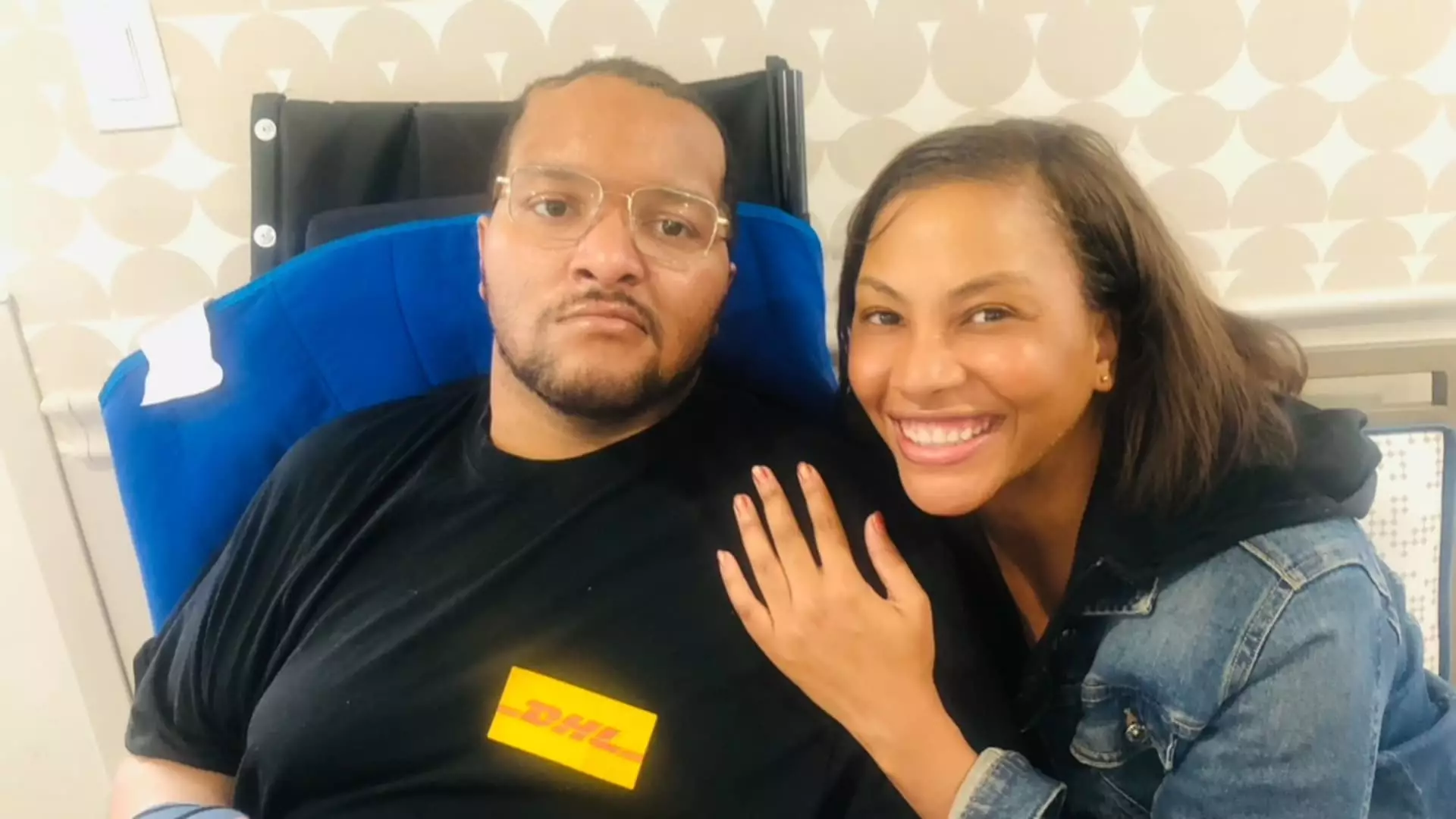In a society that prides itself on compassion and inclusivity, the reality for many individuals with disabilities remains tragically fragmented. Brandon Dickerson’s story embodies this harsh truth—an ordinary man caught in the relentless grip of a ruptured brain aneurysm, whose recovery is now intertwined with hope fueled by legislative reforms. However, beneath the surface of these well-intentioned policies lie systemic shortcomings that cast doubt on the efficacy of financial safety nets designed to aid the most vulnerable.
Despite legislative attempts to bridge gaps in support, the reality is stark: countless individuals like Brandon are left dependent on a patchwork of programs that are often insufficient, inaccessible, or ridden with bureaucratic hurdles. The promise of ABLE accounts—tax-advantaged savings tools intended to empower people with disabilities—is noble but fundamentally limited. These accounts are often portrayed as a miraculous solution, yet they serve more as a theoretical safety net than a comprehensive shield against financial hardship.
The ideal that families can now leverage tax-advantaged funds to cover essential services like speech therapy or housing is compelling, but the actual implementation reveals significant barriers. For many, the complexity of managing such accounts, coupled with restrictive eligibility criteria, renders these tools inaccessible or ineffective. The narrative of freedom and independence promised by these programs occasionally crumbles under the weight of institutional inadequacies and socio-economic disparities.
Legislation’s Silver Lining or a Glittering Mirage?
The recent legislative enhancements, including the expansion of ABLE account eligibility from age 26 to 46, are heralded as monumental victories by policymakers and advocates. Supposedly, these changes open the doors of opportunity to millions more Americans, giving hope that they will no longer be overlooked by the system. But is this hope well-founded, or merely an illusion that distracts from the deeper issues at play?
While increasing the age limit might indeed include an additional 15 million individuals in the fold of disability-related financial planning, it does little to address the core problems: inequality, stigmatization, and the persistent inadequacies of public support programs. The expansion Risks fostering a false sense of security—encouraging families to rely on legislative promises that may never fully materialize in practice. The complexities of qualifying, maintaining eligibility, and managing these accounts often require a level of financial literacy and resources that many, especially those with limited means, simply do not possess.
The superficial nature of these reforms risks equating legislation with real progress. While they may improve the landscape marginally, systemic issues like healthcare access, employment discrimination, and inadequate social services remain largely unaltered. The act of saving can become an exercise in frustration rather than empowerment when the structural barriers prevent meaningful use or full participation.
The Irony of Tax-Advantaged Savings for Socio-Economically Marginalized Groups
The very foundation of ABLE accounts—that of tax-favored savings—reflects a paradox at the heart of American social policy. These accounts are designed to promote independence and dignity, yet they predominantly serve those who already possess a certain level of financial stability or social capital to navigate complex systems. For families living paycheck-to-paycheck, the idea of diverting limited resources into a specialized account with restrictive rules often feels like a luxury, not a lifeline.
Moreover, the overarching focus on savings and investments—even in a program meant to aid low-income individuals—underscores a troubling assumption: that those with disabilities can or should be responsible for their financial futures without sufficient systemic safety nets. This neoliberal perspective shifts the burden from society to individuals, ignoring the structural inequities that persist.
The policy’s emphasis on rolling over funds from college savings plans into ABLE accounts further exemplifies this bias. It assumes a trajectory of financial planning that not every family can afford, implying a pre-existing level of economic stability. When a system subtly encourages this kind of premeditated wealth accumulation, it inadvertently privileges those already economically privileged, leaving behind the very individuals who need assistance most.
The Broader Implications: A System Built on Half-Truths
Ultimately, the narrative surrounding ABLE accounts and recent legislative reforms reveals an uncomfortable truth about social policy in America: genuine change remains elusive when driven by legislative surface-level fixes rather than deep structural reform. While expanded access and increased contribution limits are steps forward, they hardly address the root causes of inequality faced by disabled individuals.
In practice, the promise of these programs highlights an essential, but often overlooked, truth: a society’s true measure can be seen not in its legislation, but in its willingness to dismantle systemic barriers—inefficient healthcare systems, employment discrimination, and social stigmas—that hinder true independence. If the goal is to empower individuals like Brandon Dickerson, reforms must go beyond tax shelters and account limits—they must penetrate the fabric of inequality that continues to hold millions back.
A more honest and equitable society would prioritize comprehensive healthcare, fair employment opportunities, and expanded social services—elements that no amount of legislation can replace. Until these foundational issues are acknowledged and addressed, policies like ABLE accounts risk becoming symbolic gestures—well-meaning but inherently insufficient in transforming the lives of the disabled.
Building a future where disability is not a barrier to dignity requires more than fleeting legislative wins; it demands a societal commitment to restructuring the very systems that perpetuate inequality. For Brandon and countless others, hope hinges not on these superficial solutions, but on a genuine shift toward equity and justice.

